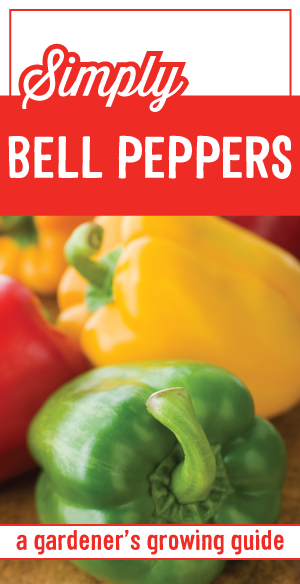
Scientific Name: Capsicum
Order: Solanales
Family: Solanaceae
Genus: Capsicum
Plant Type: Vegetable
USDA Hardiness Zones: 1-11
Soil pH Level: Around 7.0
Soil Texture: Well Drained & Loamy
Sun Exposure: Full
Appearance Description: Bell Peppers come in a variety of colors including green, red, and yellow. They can be spicy, sweet, or hot depending on the variety.
How to Plant:
1. Work the soil until it has a smooth and broken-up consistency.
2. Amend the native soil with compost, manure, or any other material.
3. Dig holes about 2-inches deep and 19-25 inches apart.
4. Place the seedlings into the hole and completely cover them with soil.
5. Water generously and be sure the soil is firmly tamped down.
How to Maintain:
1. Keep the soil constantly moist; 1-2 inches of water a week is suitable.
2. Fertilize after the first fruit set forms with a specially formulated fertilizer.
3. It may be necessary to support the plants with a trellis or wire cage.
How to Harvest:
1. Harvest as soon as the plants reach desired size and color.
2. The longer the peppers stay on the plant, the sweeter they will get.
3. To remove, use a sharp and clean knife or scissors.
Storage Tips:
Peppers can be refrigerated for up to 10 days after harvest. After that, an effective storage method should be achieved such as canning, freezing, or drying.
Top Varieties:
1. Lady Bell
2. Gypsy
3. Bell Boy
4. Lipstick
5. Golden California Wonder
Fun Facts:
1. Bell peppers contain more vitamin C than the average orange.
2. If a pepper is red, it just means it has matured longer than the green ones.
3. Bell peppers are great for homemade salsas.
Related Soil:
Schultz Moisture Plus Potting Mix
Related Plant Food:
Schultz All Purpose Water Soluble
Schultz Flower & Vegetable Extended Feed
Schultz All Purpose Extended Feed
Schultz Granular Tomato & Vegetable Plant Food
Schultz Granular All Purpose Plant Food






